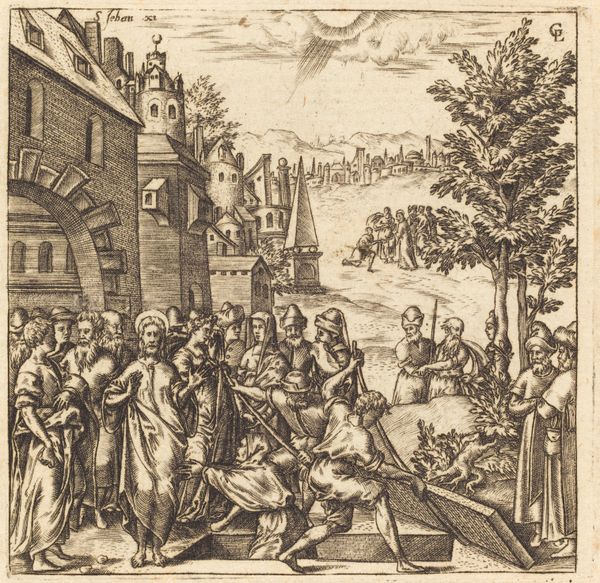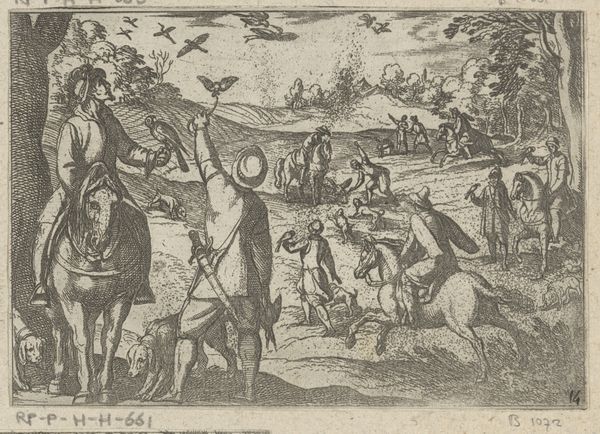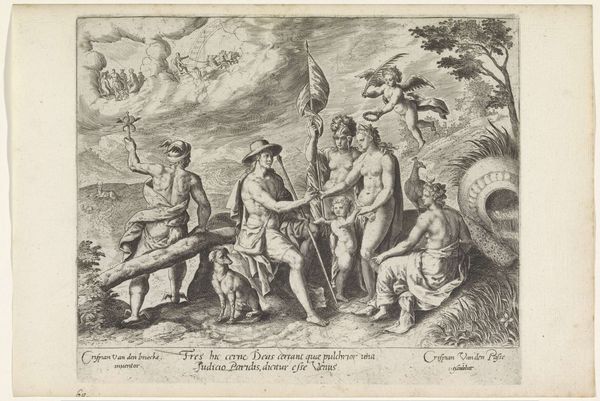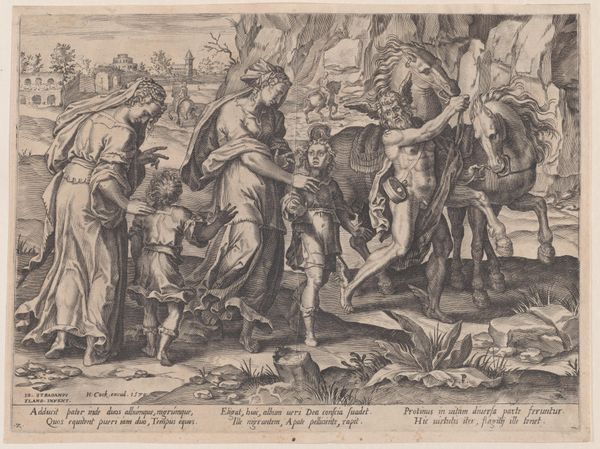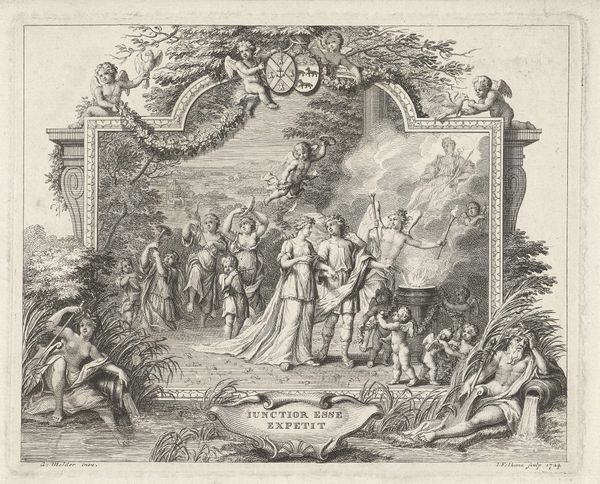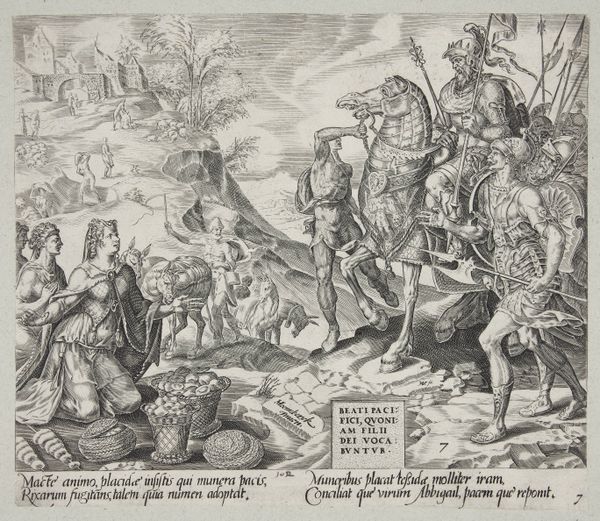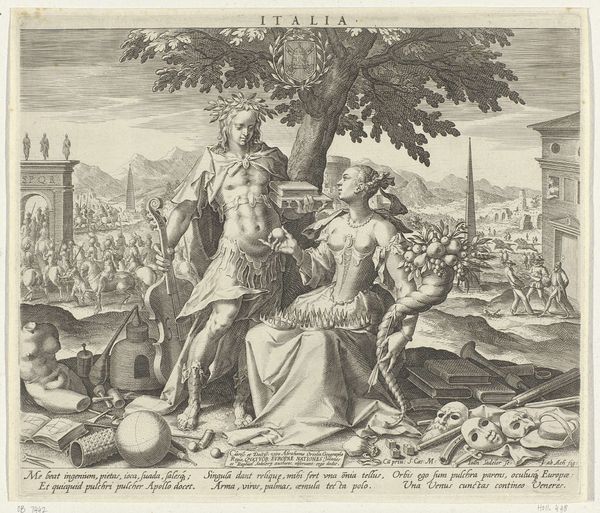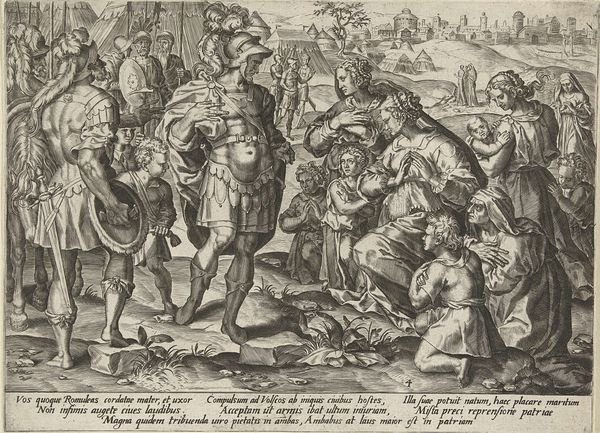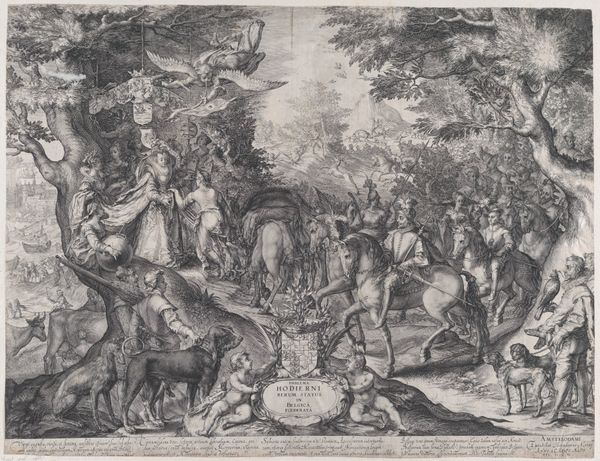
print, pen, engraving
#
allegory
#
baroque
# print
#
pen illustration
#
landscape
#
figuration
#
line
#
pen
#
history-painting
#
engraving
Dimensions: height 197 mm, width 278 mm
Copyright: Rijks Museum: Open Domain
Curator: Pieter van der Borcht the Elder created this engraving, titled "The World Upside Down," sometime between 1576 and 1608. It resides now in the Rijksmuseum. My immediate response is one of confusion. The image seems crowded with strange allegorical figures and chaotic activity in the background. Editor: Yes, chaotic is a great descriptor. The detail is extraordinary; my eye is immediately drawn to the bizarre juxtaposition of images. The angel, with the open book showing the words “recht” and “leert,” is particularly striking next to that scene of destruction in the background. The central female figure is, in some way, in juxtaposition with both of them. Curator: The engraving style lends itself to such density, and it allows the artist to express societal anxieties about the perceived disruption of the natural and moral order. There's so much political turmoil across the continent. Editor: The reversed or inverted world motif appears across different cultures throughout history and, most profoundly, during periods of upheaval. It uses striking symbolic reversals – like virtue asleep while chaos reigns. This piece truly captures that symbolic tension, doesn’t it? The inclusion of specific symbolic elements adds layers, too – for example, is that Father Time resting on what looks to be the Gates of Hell? Curator: Indeed, and this inverted world became a powerful vehicle for social critique. If you look at it from the perspective of the time, societal elites and the political status quo saw this engraving as reflecting concerns that the world was spinning out of control. Notice also how Van der Borcht used a globe as the locus from which this entire disruption radiates, reminding us that all this turmoil occurs on earth itself. Editor: Absolutely, it brings to mind ideas of shifting power dynamics. These aren't just aesthetic choices. They are carefully chosen symbols reflecting deep-seated cultural fears and philosophical inquiries into morality. The central maternal figure also suggests a world struggling with perverted and corrupted values, perhaps suggesting a new path is needed to address what is occurring on that very plane of existence. Curator: Exactly! So the print acts as a historical marker, a document reflecting the political and cultural struggles of the late 16th century, providing us with an insight into anxieties over religious wars, economic uncertainty, and societal change. Editor: Reflecting upon this image, it serves as a powerful memento mori for collective values as opposed to a solely individual reflection on death. We ought to consider which threads of meaning and fears resonate with us today, centuries later.
Comments
No comments
Be the first to comment and join the conversation on the ultimate creative platform.
